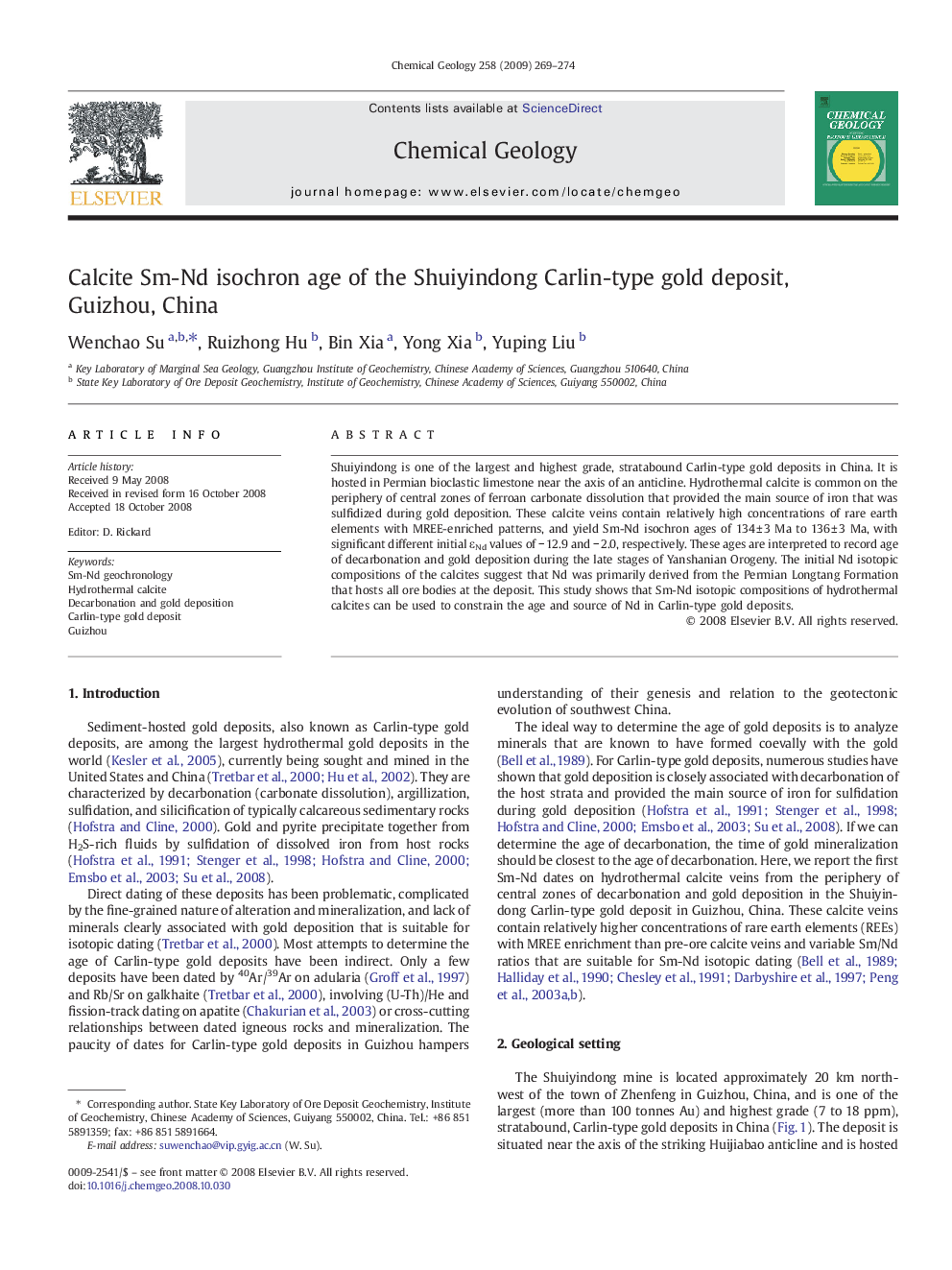| Article ID | Journal | Published Year | Pages | File Type |
|---|---|---|---|---|
| 4700429 | Chemical Geology | 2009 | 6 Pages |
Shuiyindong is one of the largest and highest grade, stratabound Carlin-type gold deposits in China. It is hosted in Permian bioclastic limestone near the axis of an anticline. Hydrothermal calcite is common on the periphery of central zones of ferroan carbonate dissolution that provided the main source of iron that was sulfidized during gold deposition. These calcite veins contain relatively high concentrations of rare earth elements with MREE-enriched patterns, and yield Sm-Nd isochron ages of 134 ± 3 Ma to 136 ± 3 Ma, with significant different initial εNd values of − 12.9 and − 2.0, respectively. These ages are interpreted to record age of decarbonation and gold deposition during the late stages of Yanshanian Orogeny. The initial Nd isotopic compositions of the calcites suggest that Nd was primarily derived from the Permian Longtang Formation that hosts all ore bodies at the deposit. This study shows that Sm-Nd isotopic compositions of hydrothermal calcites can be used to constrain the age and source of Nd in Carlin-type gold deposits.
